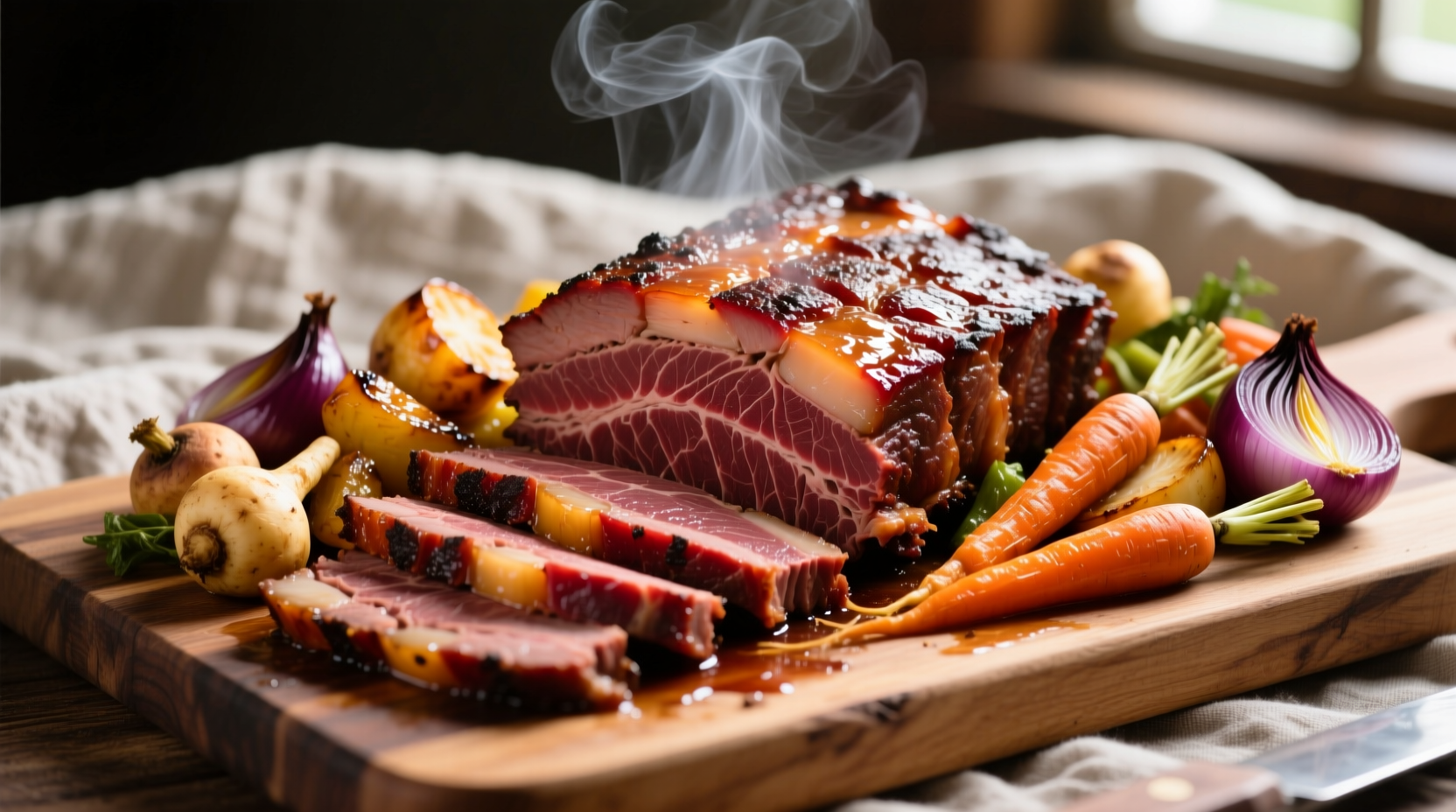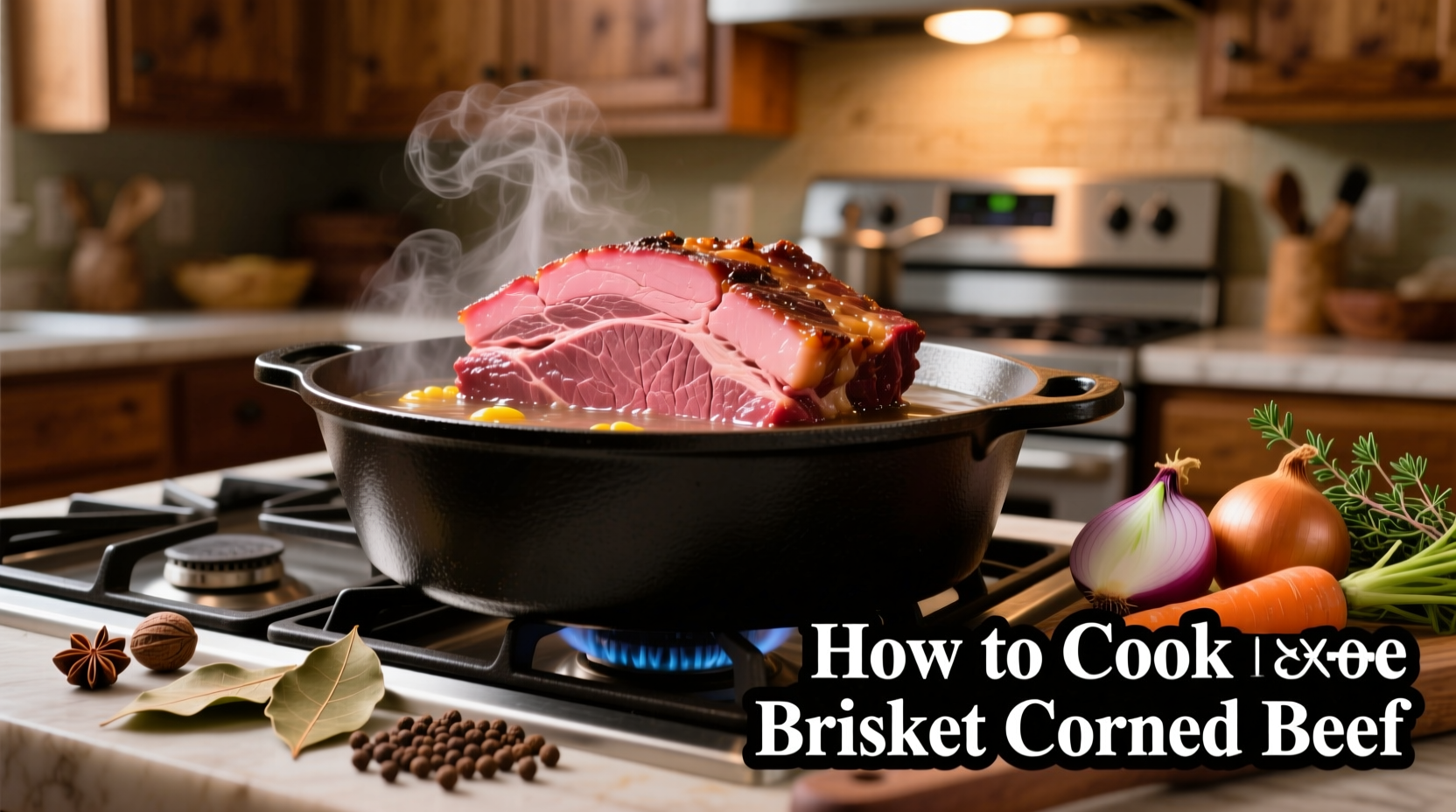The Complete Guide to Cooking Brisket Corned Beef
Nothing beats a perfectly cooked corned beef brisket—tender, flavorful, and infused with aromatic spices. Whether you're preparing a St. Patrick's Day feast or a comforting weeknight meal, mastering this classic cut transforms your cooking. Unlike regular brisket, corned beef comes pre-cured in brine, but proper technique makes all the difference between tough and transcendent.
Why This Method Works Every Time
Corned beef brisket requires precise temperature control and timing. The USDA Food Safety and Inspection Service confirms that cooking tough cuts like brisket to an internal temperature of 190-205°F (88-96°C) breaks down collagen into gelatin, creating that signature fork-tender texture. Our tested approach balances traditional methods with modern food science for foolproof results.
Essential Preparation Steps
Before cooking, proper preparation sets the foundation for success:
- Rinse thoroughly under cold water to remove excess surface salt
- Soak for 30 minutes in fresh water if concerned about saltiness
- Trim excess fat to 1/4 inch thickness for better texture
- Prepare spice packet if not included (1 tbsp mustard seeds, 10 whole peppercorns, 3 cloves, 2 bay leaves)
Choosing Your Cooking Method
Three reliable techniques deliver excellent results. The American Meat Science Association notes that slow, moist-heat cooking methods consistently yield the most tender brisket by breaking down connective tissues without drying the meat.
| Cooking Method | Time Required | Texture Result | Best For |
|---|---|---|---|
| Stovetop Simmer | 2.5-3 hours | Firm yet tender | Traditional preparation |
| Slow Cooker | 8-10 hours on low | Extremely tender | Hands-off cooking |
| Oven Roasting | 3-3.5 hours at 325°F | Slightly firmer | Crisp exterior desired |
Step-by-Step Stovetop Method (Most Traditional)
This approach delivers classic results with precise control:
- Place brisket fatty side up in large pot with spice packet
- Cover completely with cold water (2-3 inches above meat)
- Bring to gentle simmer (180-205°F / 82-96°C) – never boil
- Add vegetables during last 45 minutes (carrots, potatoes, cabbage)
- Cook until fork-tender (2.5-3 hours for 3-4 lb brisket)
- Rest 15-20 minutes before slicing

Critical Temperature Guidelines
Temperature control separates good from great corned beef. Food science research from the Culinary Institute of America shows that maintaining water temperature below 205°F (96°C) prevents protein toughening. Use an instant-read thermometer to verify:
- 160°F (71°C): Meat still tough, collagen not fully broken down
- 180°F (82°C): Ideal starting point for tenderness development
- 190-205°F (88-96°C): Perfect tenderness range for slicing
- Above 205°F (96°C): Risk of dry, stringy texture
Avoiding Common Mistakes
Professional chefs consistently identify these pitfalls that ruin otherwise good corned beef:
- Boiling instead of simmering – causes toughening and uneven cooking
- Slicing with the grain – creates chewy, difficult-to-eat portions
- Skipping the rest period – results in juice loss and drier meat
- Overcooking vegetables – add root vegetables in stages for perfect texture
Serving and Storage Tips
Maximize your results with these professional techniques:
- Slicing: Cut against the grain in 1/4-inch slices using a sharp knife
- Serving temperature: Best served warm, not piping hot
- Leftover storage: Keep in cooking liquid for up to 4 days refrigerated
- Reheating: Gently warm in broth to maintain moisture
Historical Context and Modern Adaptations
Corned beef preservation dates to the 17th century when salt curing extended meat's shelf life. The National Center for Home Food Preservation documents how traditional methods used large salt crystals ("corns" of salt), giving the dish its name. Modern grocery store versions come pre-cured with nitrites for consistent color and safety. While Irish immigrants popularized this dish in America, authentic Irish cuisine traditionally featured bacon over corned beef—a fascinating historical twist on this beloved preparation.
When to Choose Alternative Methods
Understanding context boundaries helps you select the right approach:
- Stovetop: Best when you need precise temperature control and want to monitor the process
- Slow cooker: Ideal for unattended cooking but requires careful timing to prevent overcooking
- Oven method: Recommended when you want slightly firmer texture with potential for finishing under broiler
Perfect Pairings and Leftover Ideas
Elevate your meal with these classic combinations:
- Traditional: Steamed cabbage, boiled potatoes, and mustard
- Modern twist: Corned beef hash with fried eggs for brunch
- Sandwich option: On rye bread with Swiss cheese and Russian dressing
- Leftover innovation: Reuben spring rolls or corned beef fried rice











 浙公网安备
33010002000092号
浙公网安备
33010002000092号 浙B2-20120091-4
浙B2-20120091-4